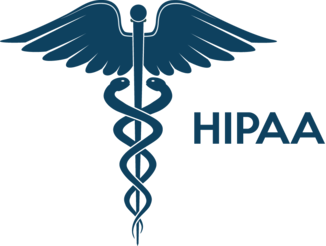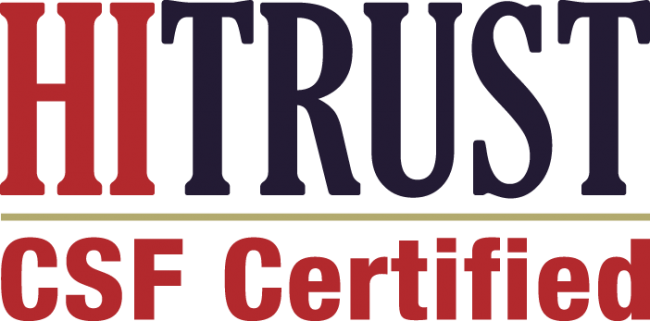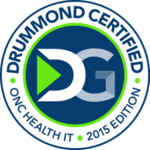The landscape of Medicare care management has undergone significant transformation over the past decade, culminating in the introduction of Principal Care Management (PCM) services in 2022. This evolution reflects Medicare’s ongoing commitment to improving patient outcomes while addressing the growing burden of chronic diseases among America’s aging population. Understanding this progression—and how innovative platforms like HealthViewX’s PCM application are facilitating this transition—provides crucial insights into the future of healthcare delivery.
The Foundation: Understanding Medicare’s Care Management Journey
Medicare’s approach to care management has been fundamentally shaped by the recognition that traditional fee-for-service models often fail to address the complex needs of patients with chronic conditions. The journey began with the introduction of Chronic Care Management (CCM) services in 2015, which established the foundation for coordinated, comprehensive care for Medicare beneficiaries with multiple chronic conditions.
The CCM Era: Setting the Stage
CMS introduced CCM services in 2014, establishing new codes and guidelines that were updated in 2021 and 2022. CCM was designed to provide comprehensive care coordination for patients with two or more chronic conditions, requiring a comprehensive care plan and systematic approach to managing multiple health issues simultaneously.
However, as healthcare providers gained experience with CCM implementation, several challenges emerged:
- Complexity Overload: Managing multiple chronic conditions simultaneously often resulted in fragmented care plans
- Resource Allocation: The broad scope of CCM sometimes diluted focus from high-risk, single conditions requiring intensive management
- Reimbursement Gaps: Certain high-acuity patients with single, complex conditions didn’t fit well into the CCM framework
The Catalyst for Change: Why PCM Was Necessary
The introduction of PCM in 2022 addressed critical gaps in the Medicare care management ecosystem. PCM is refined in scope to treat one, isolated chronic condition, representing a strategic shift toward more targeted, intensive care management.
Key Drivers Behind PCM Introduction
- Rising Healthcare Costs Medicare spending continues to escalate, with chronic disease management representing a significant portion of healthcare expenditures. Patients with single, high-risk chronic conditions often experience frequent hospitalizations and emergency department visits that could be prevented through proactive management.
- Clinical Evidence for Focused Care Research demonstrated that patients with single, complex chronic conditions—such as advanced heart failure, COPD, or diabetes with complications—benefit from disease-specific, intensive management rather than broad-spectrum care coordination.
- Provider Feedback Healthcare providers reported that some patients needed more intensive management for a single condition than CCM could provide, while others with multiple but stable conditions required less intensive oversight.
- Quality Improvement Opportunities The goal of PCM is to stabilize a patient’s condition through care management rather than siloed treatment from a primary care physician and specialist(s).
PCM Implementation: The 2022 Launch
CMS introduced PCM as a Part B benefit in 2022, with Medicare beginning to accept four new current procedural terminology (CPT) codes for principal care management and discontinuing two Healthcare Common Procedure Coding System G codes. This transition represented more than just administrative changes—it signaled a fundamental shift in how Medicare approaches chronic care management.
PCM Service Components
Medicare Part B covers disease-specific services to help manage care for a single, complex chronic condition that puts patients at risk of hospitalization, physical or cognitive decline, or death. The service includes:
- Disease-Specific Care Planning: Unlike CCM’s comprehensive approach, PCM focuses on developing targeted care plans for single, high-risk conditions
- Regular Medication Management: Systematic review and adjustment of medications specific to the primary condition
- Care Coordination: Streamlined coordination between primary care providers and specialists focused on the principal condition
- Patient Education: Condition-specific education and self-management support
Reimbursement Structure
The new CPT codes are paid at a higher rate than the previous G codes, reflecting Medicare’s commitment to incentivizing providers to deliver high-quality, focused care management services. This enhanced reimbursement structure acknowledges the intensive nature of managing high-risk, single chronic conditions.
Implementation Challenges and Opportunities
Despite its clinical logic and improved reimbursement, PCM adoption has faced challenges. CMS utilization data shows low use rates, and the agency has released guidance documents to educate providers and patients, hoping to boost usage.
Barriers to Adoption
Administrative Complexity Providers must document the time spent providing PCM services, patient risk factors, and care plans, with requirements for disease-specific care plans and systematic needs assessments when they apply to the condition being treated.
Technology Infrastructure Many healthcare organizations lack the technological infrastructure to efficiently deliver and document PCM services, creating operational burdens that can offset the financial benefits.
Workflow Integration Integrating PCM services into existing clinical workflows requires significant organizational change management and staff training.
The Solution: Advanced PCM Platforms
This is where innovative technology platforms like HealthViewX’s Principal Care Management application become crucial to successful implementation and scaling of PCM services.
HealthViewX PCM Platform: Bridging the Gap
HealthViewX’s Principal Care Management platform enables providers to deliver collaborative care and get reimbursed for Medicare PCM services seamlessly. The platform addresses many of the implementation challenges that have hindered widespread PCM adoption.
Key Features and Capabilities
Automated Patient Identification The platform automatically identifies eligible patients, enabling streamlined enrollment processes. This automation eliminates one of the primary barriers to PCM implementation—the time-intensive process of identifying appropriate candidates.
Intelligent Care Plan Generation HealthViewX PCM platform generates pre-built care plans automatically based on the chronic condition mapped in the EHR and individual patient needs to prevent hospitalization and improve quality measures. This feature ensures that care plans are both evidence-based and personalized.
Comprehensive Documentation The platform captures accurate time spent with patients and generates billing documentation automatically, addressing the administrative burden that often deters providers from participating in care management programs.
Integration Capabilities Seamless EHR integration ensures that PCM services complement existing clinical workflows rather than creating additional administrative overhead.
ROI and Financial Impact
PCM services delivered through advanced platforms are becoming increasingly essential for financial sustainability and growth. The combination of higher reimbursement rates and streamlined delivery through technology platforms creates compelling economic opportunities for healthcare organizations.
The Broader Context: Advanced Primary Care Management (APCM)
The evolution of Medicare care management continues beyond PCM. CMS has published Advanced Primary Care Management (APCM) Services—a bundled, monthly payment for comprehensive, team-based primary care. This development suggests that Medicare’s approach to care management will continue evolving toward more sophisticated, technology-enabled models.
APCM services combine elements of several existing care management and communication technology-based services, indicating that platforms capable of supporting multiple care management modalities will become increasingly valuable.
Looking Forward: The Future of Medicare Care Management
The introduction of PCM in 2022 represents a significant milestone in Medicare’s evolution toward value-based care. However, it’s just one component of a broader transformation that includes:
Technology-Driven Care Delivery
Platforms like HealthViewX are demonstrating that technology can make complex care management programs operationally feasible and financially sustainable. These platforms enable providers to automate workflow processes and increase utilization rates up to 50%.
Personalized Care Approaches
PCM offers targeted, intensive management for a single high-risk chronic condition, while CCM provides comprehensive care for patients with multiple chronic conditions. This differentiation enables more personalized care approaches that match intervention intensity with patient needs.
Quality and Outcome Focus
The evolution toward PCM reflects Medicare’s broader shift from volume-based to value-based care, emphasizing patient outcomes and quality measures over service quantity.
Key Takeaways for Healthcare Organizations
The introduction of PCM in 2022 offers several important lessons for healthcare organizations:
- Targeted Approaches Work: Disease-specific care management can be more effective than broad-spectrum approaches for certain patient populations
- Technology is Essential: Successful implementation of complex care management programs requires robust technological infrastructure
- Financial Sustainability: Enhanced reimbursement combined with efficient delivery platforms creates viable business models for comprehensive care management
- Continuous Evolution: Medicare’s care management programs will continue evolving, requiring organizations to maintain flexibility and adaptability
Conclusion
The introduction of Principal Care Management in 2022 represents a logical evolution in Medicare’s approach to chronic care management. By focusing on single, high-risk conditions, PCM addresses gaps in the existing care management framework while providing enhanced reimbursement opportunities for providers.
However, realizing the full potential of PCM requires more than just understanding the regulations—it demands sophisticated technological infrastructure and streamlined operational processes. Platforms like HealthViewX’s PCM application demonstrate how technology can transform regulatory requirements into practical, financially sustainable care delivery models.
As Medicare continues evolving toward value-based care, organizations that invest in advanced care management platforms and develop expertise in targeted chronic disease management will be best positioned to succeed. The PCM introduction in 2022 is not just a new reimbursement opportunity—it’s a preview of healthcare’s increasingly personalized, technology-enabled future.
The success of PCM implementation will ultimately depend on healthcare organizations’ ability to leverage technology platforms that can automate administrative processes, support evidence-based care delivery, and demonstrate measurable improvements in patient outcomes. In this context, choosing the right technology partner, like HealthViewX, becomes a strategic decision that can determine the success or failure of care management initiatives.
For healthcare organizations looking to implement PCM services, partnering with experienced technology platforms like HealthViewX can provide the infrastructure and support necessary to deliver high-quality care while maximizing financial returns. The evolution of Medicare care management continues, and organizations that act decisively to implement these programs will have significant competitive advantages in the value-based care landscape.








